100 heath Street, London Hampsteadh
| Biography | Gallery | Photographs | Chronology |
| News | Books and cards | International press | Updates |
| Chepik's Exhibitions | Home Page | ||
SERGEI CHEPIK PERSONAL EXHIBITION
CATTO GALLERY
![]() Exhibition is opening on September 20th to October 9th at the Catto Gallery,
Exhibition is opening on September 20th to October 9th at the Catto Gallery,
100 heath Street, London Hampsteadh
Here are some of the works displayed
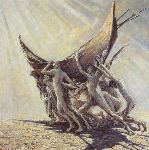 |
 |
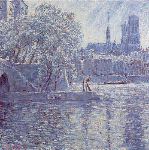 |
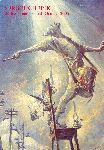 |
 |
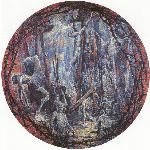 |
 |
|
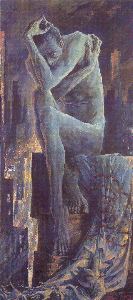 |
 |
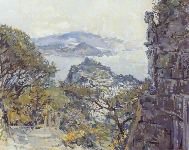 |
 |
 |
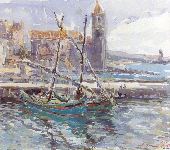 |
||
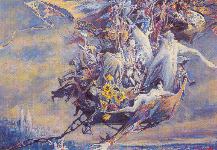 |
 |
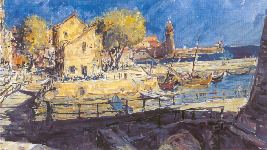 |
|
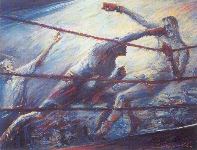 |
 |
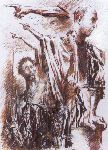 |
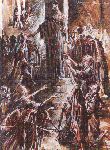 |
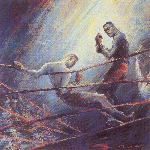 |
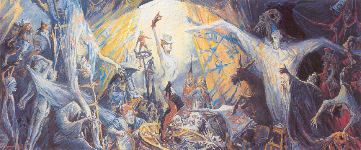 |
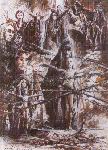 |
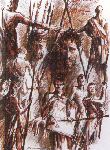 |
(c) Sergei Chepik
GODFREY BARKER FOR GILLIAN CATTO
18 August 2005
SERGEI CHEPIK is the leading Russian living artist, but Russian art has a new context in 2005. Russia has rejoined the world. Many of Moscow's richest and most talented citizens have moved to London since 2000 in a gigantic brain drain. They have brought their art and a Russian art market with them. Russian art spending is suddenly so heavy in London that Sotheby's is staging three Russian auctions a year (paintings and works of art) with sale totals likely to pass £ 40m in 2005, while Christie's set a new record for Russian art on 30 November 2004 when Aivazovsky's magical view of St Isaac's Cathedral on a Frosty Day , painted in St Petersburg in the golden light of a late winter afternoon, sold for £ 1,125,250 ($2,125,597).
That was the star of a sale when the Russian market leapt into flame. Records were set alongside Aivazovsky for almost all Russia's great 19 th century masters, headed by Repin, Shishkin, Semiradskii, Sverchkov, Somov, Korovin and Petrov-Vodkin at prices descending from £ 1,013,250 to £ 184,450. Such figures make the finest works of Chepik look a bargain alongside them.
Not all those sums were paid by Russians. Recognition of Russia's importance to European art now comes from the US, the UK and France in particular. Special recognition for the achievement of Sergei Chepik came in 2005 when he unveiled last January in St Paul's Cathedral a quartet of vast paintings of the life, crucifixion and resurrection of Christ, the first paintings to be installed there since Holman Hunt's Light of the World in 1904. Hanging at the crossing, enriching the Dutch austerity of the east end of the Cathedral, these spectacular pictures, well received by the Dean and Chapter and an 'opening night' audience headed by Baroness Thatcher, were two years in the making and five years in the artist's mind.
Gillian Catto's new exhibition for Chepik parades a year of justified 'pleasure painting' after the exhaustion which went into the work at St Paul's.
For those who have admired the fantastic invention of the Cathedral panels, with their 21 st century interest in the chill faces and motivations of those screamed for the death of Christ, the tondo of the Crucifixion with which Chepik has 'signed off' the St Paul's years is an extraordinary work. It is one of the most savage, tumultuous, chaotic Crucifixions in the history of art, a chaos in which Jesus is shown three times, aloft, at the foot and deposed from the Cross. But it is much more brightly coloured and impastoed than the St Paul's paintings and the convulsive scene is viewed through a circle of flame and corona of thorns.
Chepik moved to Paris from Leningrad in 1988 when his lover and now his wife, Marie-Aude Albert, extracted him from the prison of the USSR. He painted the city and the Seine often in the 1990s and in 2005 has added a trio of low light views on the water with whites and greys predominant. A further trio paint low life and strippers. Warmer lights develop in a quintet of watercolours in the south of France.
But these are charming sideshows by one of the few great painters of our time to be animated by a burning moral intensity.
The grotesque deception of the USSR - its corruption, cruelty, genocide - was the issue for Chepik in his supreme works of the 1980s like The Station and The House of the Dead. That savage art which he hurled down now asks wider questions about 20 th century humanity. Across the planet, 1900-2000 was one of the three most violent centuries in history, one when we invented the nuclear bomb. Chepik's art will 'represent' this century to those who come after us; and the art of a Russian is more entitled to fulfil that task than most.
In his fierce psychological enquiry, Chepik has come to study the indifference and the turned gaze of individuals as well as the ferocity of mass murderers and Ivan the Terribles. The 2004 St Paul's paintings stare hard at that. The 2005 works since them ask questions about men's willingness to follow crazed leaders and Utopian visions. So here, in the three main pictures, are Jason and the Argonauts, so blinded by dreams that they do not notice red-hot soil under their feet;
The Bellringers, who do not see that their bell tower has become a hangman's gibbet and that their bells are broken; and La Strada, an empty road lit by meaningless electric lights, going nowhere.
Russian artists are serious - and fantastic - in styles unknown to British art. So it was with Tchaikovsky and the Mighty Five composers, so now with Chepik.
"Russians are passionate about their own culture. They are deeply educated in a way that many Westerners are not. Many have informed and wonderful taste," says my friend Mark Poltimore at Sotheby's. Can one devise kinder words for Chepik?
Godfrey Barker , August 2005